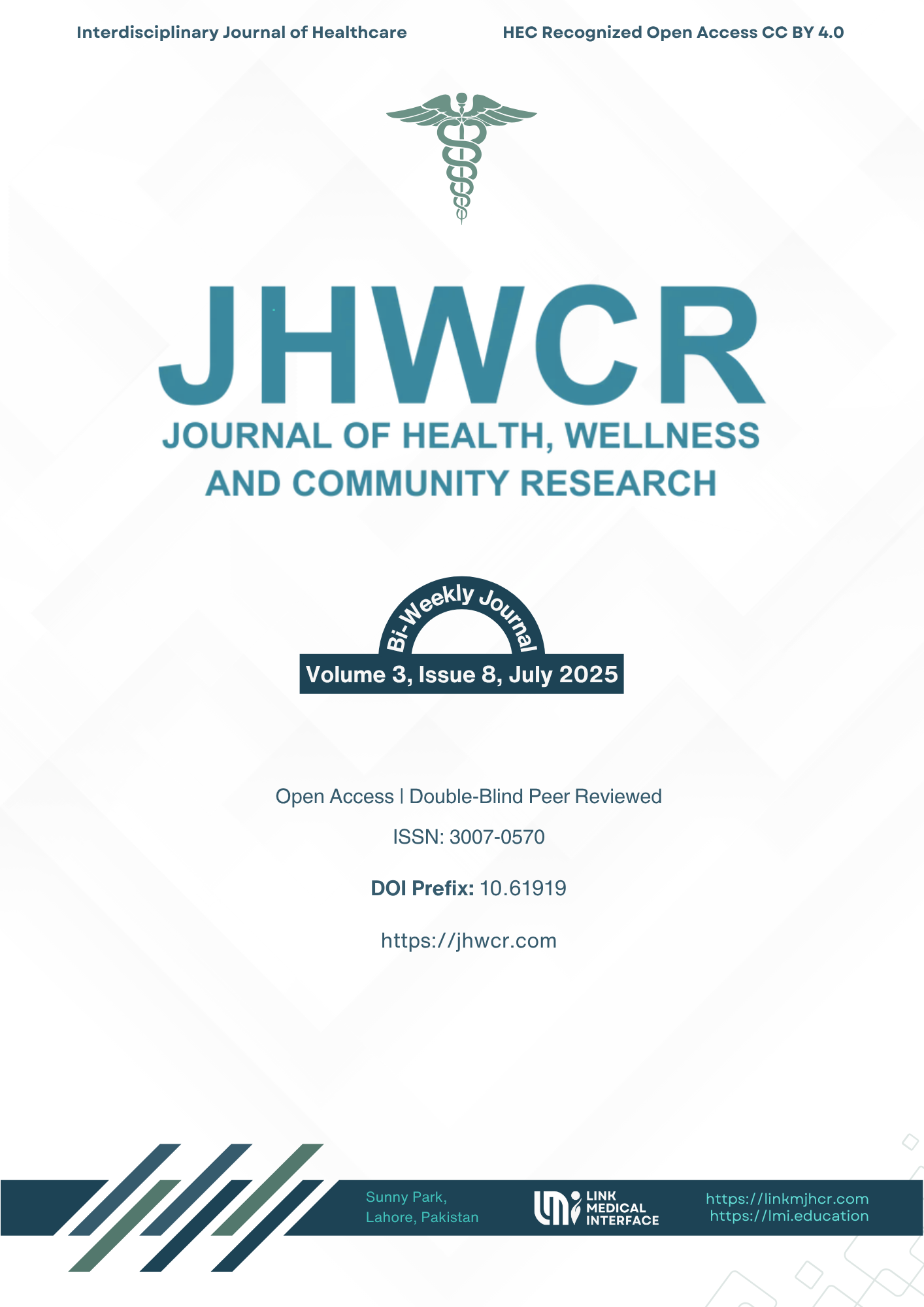The Role of Social Determinants in the Development of Antibiotic Resistance: Impact in Rural Settings
DOI:
https://doi.org/10.61919/7g33hb94Keywords:
Antimicrobial Resistance, Social Determinants, Rural Health, Antibiotic Misuse, Healthcare AccessAbstract
Background: Antimicrobial resistance (AMR) poses a critical global health challenge, particularly in rural communities where limited healthcare access, economic hardship, and low health literacy contribute to antibiotic misuse. Social determinants of health significantly influence patterns of antibiotic consumption and the risk of resistance development. Objective: This study aimed to examine the role of social determinants, including socioeconomic status, education level, and healthcare accessibility, in influencing antibiotic misuse and AMR awareness among adults in rural Pakistan. Methods: A cross-sectional observational study was conducted between January and June 2024 in a rural public hospital in Jamshoro District, Sindh, Pakistan. Using simple random sampling, 350 adults were surveyed with a structured, pre-validated questionnaire covering demographics, healthcare access, antibiotic use patterns, and AMR knowledge. Data were analyzed with descriptive statistics and chi-square tests, with significance set at p < 0.05. Results: Frequent antibiotic use was reported by 37.1% of participants, while 34.3% relied on over-the-counter antibiotics. Low-income and lower education levels were significantly associated with antibiotic misuse (p = 0.029 and p = 0.004, respectively). Participants residing more than 10 km from healthcare facilities showed higher misuse rates, and only 57.1% were aware of AMR risks. Conclusion: Social determinants critically drive antibiotic misuse in rural settings, highlighting the need for targeted interventions focusing on education, healthcare accessibility, and AMR awareness to mitigate resistance threats.
Downloads
Published
Issue
Section
License
Copyright (c) 2025 Ahsan Ali Memon, Savera, Abdul Razzaque Nohri, Sher Muhammad Nuhrio, Asif Ali Soomro, Hira Jamil (Author)

This work is licensed under a Creative Commons Attribution 4.0 International License.


